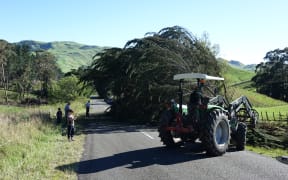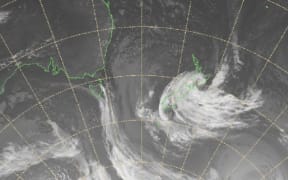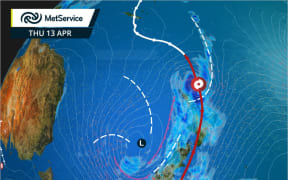As Cyclone Cook passes over New Zealand's east coast, cutting power and closing roads, Alison Ballance looks at the science of tropical cyclones.
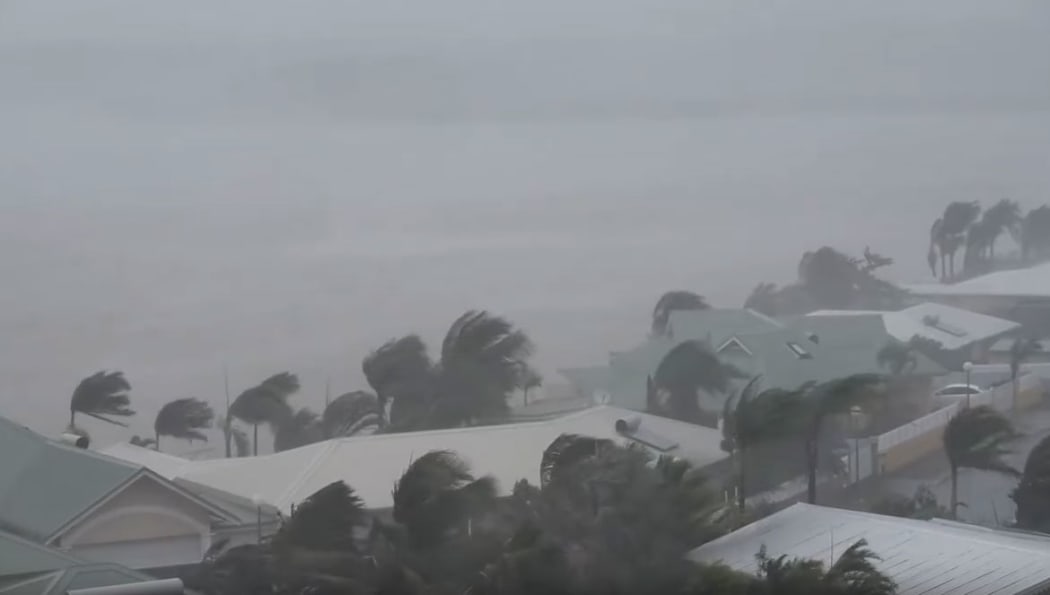
Tropical cyclones are intense storms that form near the Equator. Photo: YouTube/ Breaking Disaster
What is a tropical cyclone?
A tropical cyclone is an intense, rotating storm that forms over warm ocean waters in the tropics near the equator.
It starts life as a tropical disturbance or depression, and is considered to be a tropical cyclone when it reaches sustained wind speeds of 63km/h.
Where does the name cyclone come from?
The name cyclone refers to the 'cyclonic' or spinning nature of the air. In the Southern Hemisphere cyclones rotate clockwise, and in the Northern Hemisphere they rotate counter clockwise.
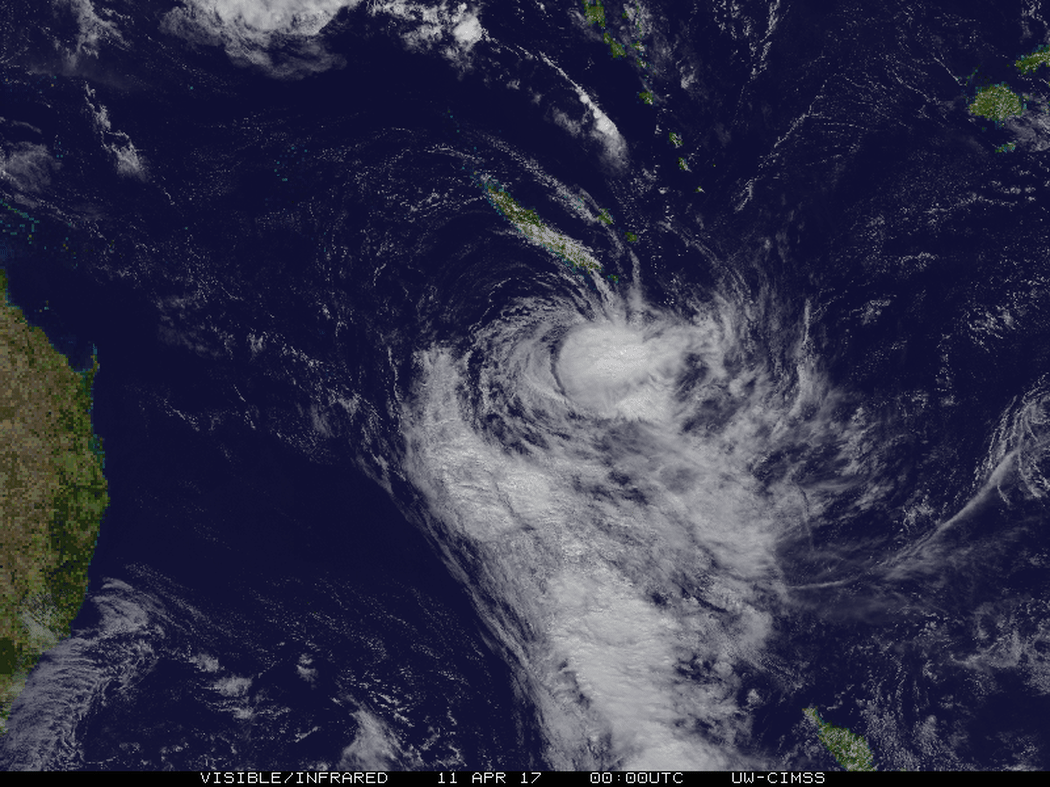
Cyclone Cook's position on the evening of 11 April. Photo: NOAA - Satellite Image
How does a tropical cyclone differ from a hurricane or typhoon?
It doesn't. All of these are tropical cyclones, they just occur in different parts of the world. In the Atlantic and Northeast Pacific they're known as hurricanes. The same type of storm in the Northwest Pacific is called a typhoon, while in the South Pacific we call them cyclones.
How does a tropical cyclone begin?
NASA describes tropical cyclones as being giant engines that use warm, moist air as fuel.
Warm air can hold a lot of moisture. Warm air also rises. So, warm air moving over warm water takes up moisture, and this moist air rises, creating an area of low pressure below.
Surrounding air from areas of higher pressure is sucked into the area of low pressure, absorbs moisture and also begins to rise. The air cools as it rises and forms clouds.
This process also generates winds, and the whole weather system rotates because of the spin of the earth. After a while a calm area, known as the eye, develops at the centre of the storm. Barometric pressure (measured in hectopascals or hPa) is lowest in the eye of the storm.
There are five categories of tropical cyclone, which are defined by sustained wind speed:
Category 1 tropical cyclone has mean winds of 63-87km/h with a central pressure greater than 985 hPa
Category 2 tropical cyclone has mean winds 89-117km/h with a central pressure 985-970 hPa
Category 3 severe tropical cyclone has mean winds 118-157km/h with a central pressure 970-945 hPa
Category 4 severe tropical cyclone has mean winds 158-198km/h with a central pressure 945-910 hPa
Category 5 severe tropical cyclone has mean winds greater than >198km/h with a central pressure less than 910 hPa.
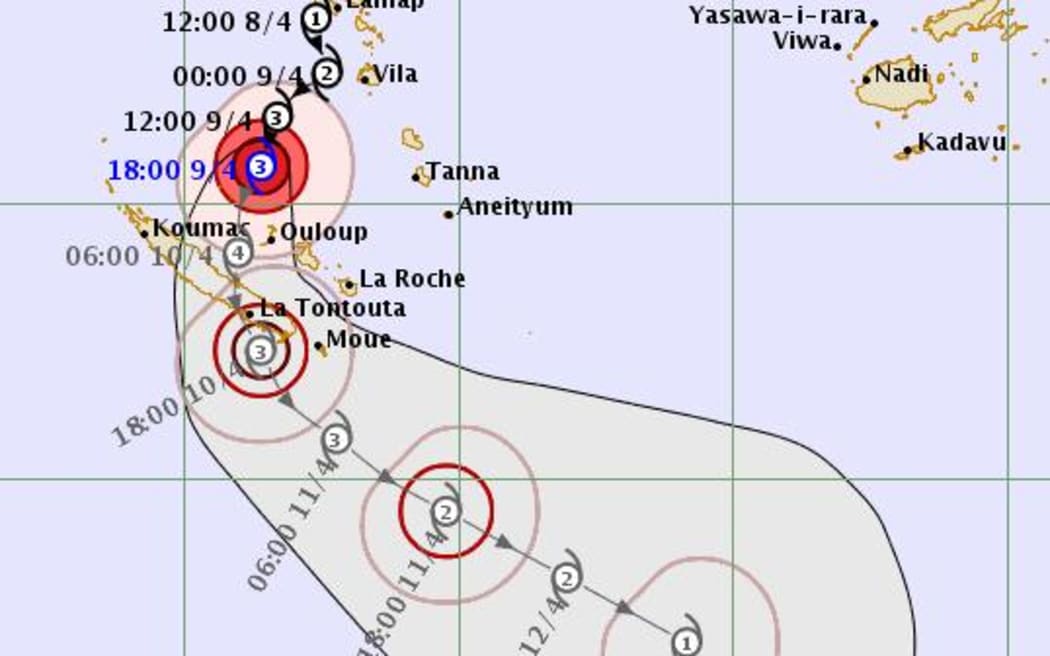
Cyclone Cook intensified to Category 3 as it passed over New Caledonia. Photo: RSMC Nadi Tropical Cyclone Warning Centre
What was Cyclone Cook categorised as?
At its peak Cyclone Cook was a category 3 severe tropical cyclone. It started life as a tropical depression, known as TD20F (the 20 means it was the 20th tropical depression named by the Fiji Meterological Service this season, with F standing for Fiji). When it became strong enough to be categorised as a category 1 tropical cyclone it was named Cook. It rapidly grew in intensity and became a category 2 then 3.
How does Cyclone Cook compare to the biggest cyclone ever recorded?
The lower the pressure in the middle of a cyclone, the more intense or strong it is.
The strongest tropical cyclone recorded worldwide, as measured by minimum central pressure, was Typhoon Tip, which reached a low pressure of 870 hPa on October 12, 1979. Severe Tropical Cyclone Cook, by comparison, had a low of 961 hPa.
In February 2016 Category 5 Severe Tropical Cyclone Winston struck Fiji. Before it reached land the estimated central pressure was 915 hPa, with maximum winds near 230km/h.
Tropical cyclone names are alphabetical, so how come New Zealand was affected by tropical cyclone Debbie last week but by Cook this week?
Different organisations have responsibility for naming tropical cyclones that develop in different parts of the world. Tropical Cyclone Debbie was named by the [Australian Bureau of Meteorology Australian Bureau of Meteorology], whereas Tropical Cyclone Cook developed further east and was named by the Fiji Meteorological Service.
Each organisation has lists of alphabetical names that they use in succession. If a cyclone is a significant event then that name is retired.
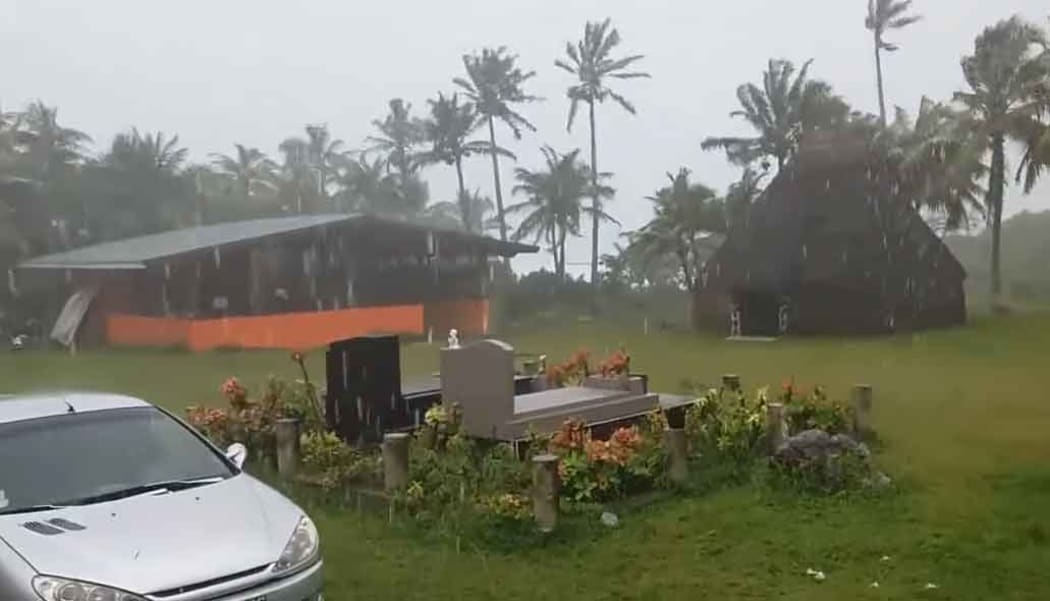
Cyclone Cook as it hit New Caledonia. Photo: YouTube/ Breaking Disaster
Is there a cyclone season?
The official South Pacific Cyclone season is 1 November to 30 April, although cyclones can form outside that period.
On average there are 10 named tropical cyclones each year. 2016-17 has been a quiet cyclone season in the South Pacific, and prior to Cook the only other cyclone in the area managed by Fiji and New Zealand that was strong enough to be named was Bart, in February. That was Category 1.
What has happened to Tropical Cyclone Cook?
As it passed over New Caledonia and approached New Zealand, Tropical Cyclone Cook became known as Cyclone Cook and was then downgraded to an extra tropical low.
While a cyclone is in the tropics, MetService says that the strongest winds and most intense rain usually occur just outside the 'eye', in the ring of thunderstorms known as the eyewall. This changes as the cyclone moves into higher latitudes with cooler ocean temperatures. The weather system loses its symmetrical shape, and cooler temperatures lower its intensity.
Although Cyclone Cook has lost much of its tropical intensity, it is interacting with a moist northeasterly flow coming ahead of a low pressure system in the Tasman Sea to produce high rainfall and strong winds.
While it is no longer a tropical cyclone, MetService has continued to refer to it as Cyclone Cook to reflect its intensity.

